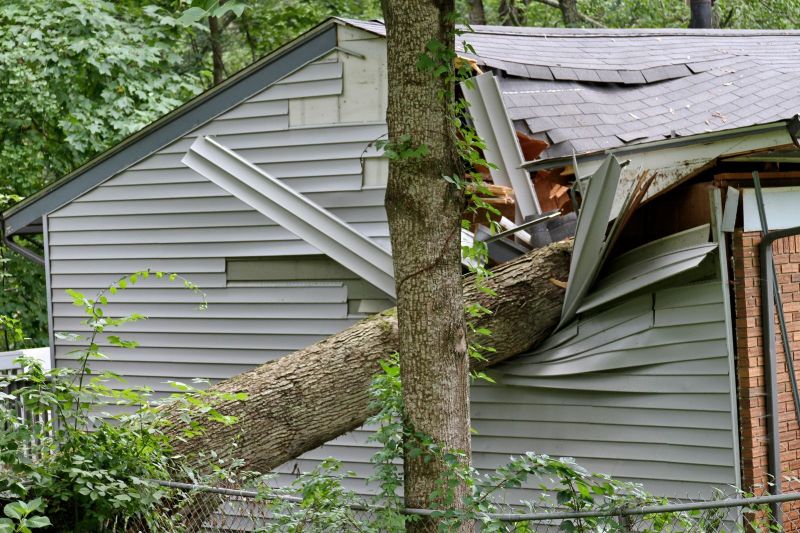After a severe storm, the first thing on most people's minds is safety and security. Homeowners often prioritize checking on the safety of their family, assessing the extent of damage to their properties, and finding ways to repair the damage as soon as possible. One aspect of storm damage repair that is often overlooked, but essential, is covering roofs.
Covering roofs after a storm is a crucial step in the process of repairing storm damage. Here are some reasons why:
Protection from further damage
- Covering roofs after a storm helps to prevent further damage to your home. If your roof has been damaged during the storm, it will likely be exposed to the elements. Rain, wind, and debris can enter your home through the damaged roof, causing more damage to the interior of your home. Covering your roof can help to protect your home from further damage while you wait for repairs to be made.
Safety
- Covering your roof after a storm is also essential for safety reasons. Damaged roofs can pose a significant risk to the safety of you and your family. A damaged roof can collapse, or debris from the damaged roof can fall, causing injury or even death. Covering your roof can help to prevent accidents and ensure the safety of everyone in your home.
Preventing water damage
- One of the most significant risks of a damaged roof is water damage. If water enters your home through a damaged roof, it can cause significant damage to your property. Water can lead to mold growth, which can be harmful to your health, and can cause structural damage to your home. Covering your roof can help to prevent water from entering your home and causing damage.
Insurance requirements
- Covering your roof after a storm is often a requirement of insurance companies. Most insurance policies require homeowners to take steps to prevent further damage to their property after a storm. Failing to cover your roof could result in your insurance company denying your claim for damages.
Quick repair process
- Covering your roof can also help to expedite the repair process. If you wait to cover your roof until repairs can be made, it could take longer for the repair process to begin. Covering your roof can help to prevent further damage, allowing repairs to begin sooner.
When it comes to covering roofs after a storm, there are several options available. Here are a few common methods:
Tarpaulin
- Tarpaulin is a common material used to cover damaged roofs. It is durable and waterproof, making it an ideal choice for covering roofs after a storm. Tarpaulin is available in various sizes and can be secured to the roof using ropes, bungee cords, or other materials.
Plywood
- Plywood is another option for covering roofs after a storm. It is a more permanent solution than tarpaulin and can be used if the damage to the roof is more extensive. Plywood can be secured to the roof using nails or screws and can be painted to match the color of your roof.
Roofing paper
- Roofing paper is a lightweight and waterproof material that is often used to cover roofs during construction. It can also be used to cover damaged roofs after a storm. Roofing paper is easy to install and can be secured to the roof using nails or staples.
Covering roofs after a storm is a crucial step in the process of repairing storm damage. It helps to prevent further damage to your home, ensures the safety of you and your family, prevents water damage, meets insurance requirements, and expedites the repair process. There are several options available for covering roofs, including tarpaulin, plywood, and roofing paper. If your home has been damaged in a storm, it is essential to cover your roof as soon as possible

